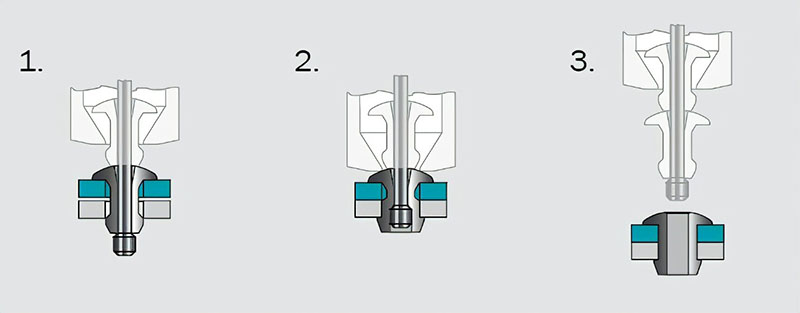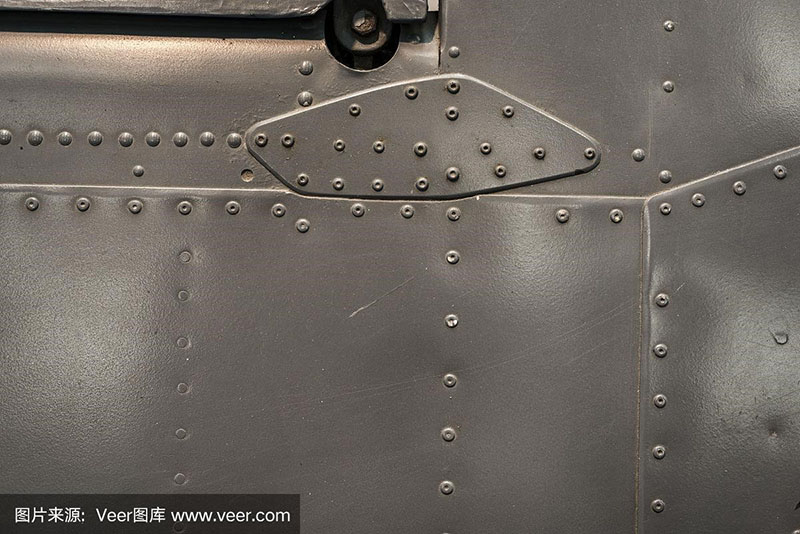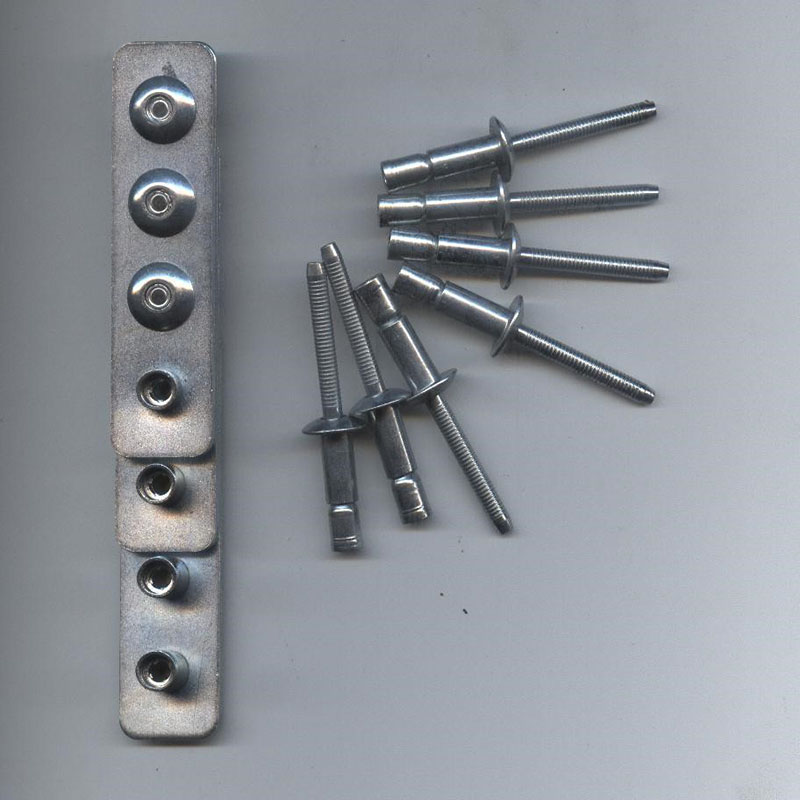Characteristics and application scope of various rivet connection methods:
1. Ordinary riveting
The ordinary riveting process is relatively simple, the method is mature, the connection strength is stable and reliable, and the application range is wide. The deformation of the connecting parts is relatively large.
Ordinary riveting is widely used in various components and parts of the body, among which half round head and flat cone head rivets are used for connecting the internal mechanism of the body and the outer skin with low aerodynamic appearance requirements. Countersunk head riveting is mainly used for the outer skin with high aerodynamic appearance requirements, and large flat round head rivets are used for connecting the skin and oil tank compartments with low aerodynamic appearance requirements.
2. Sealing riveting
The characteristic of sealed riveting is that it can eliminate structural gaps and block leakage paths. The process is relatively complex, and the laying of sealing materials must be carried out in a certain construction temperature, humidity, and other environments.
Used for sealing parts and structures into integral fuel tanks, airtight cabins, etc.
3. Special riveting
High riveting efficiency and simple operation; Be able to adapt to the special requirements of the structure; The rivet structure is relatively complex, with high manufacturing cost and narrow application range, making it difficult to eliminate riveting faults.
Used for parts with special structural requirements, and can also be used for repairing and troubleshooting.
4. Interference fit
Long fatigue life, able to seal the nail holes, fundamentally improving the quality of riveting. However, high precision requirements are required for rivet holes, and strict clearance requirements are required for the fit between the nail and the hole before riveting.
Used for components and parts with high fatigue resistance requirements or sealing requirements.
Post time: Nov-17-2023




